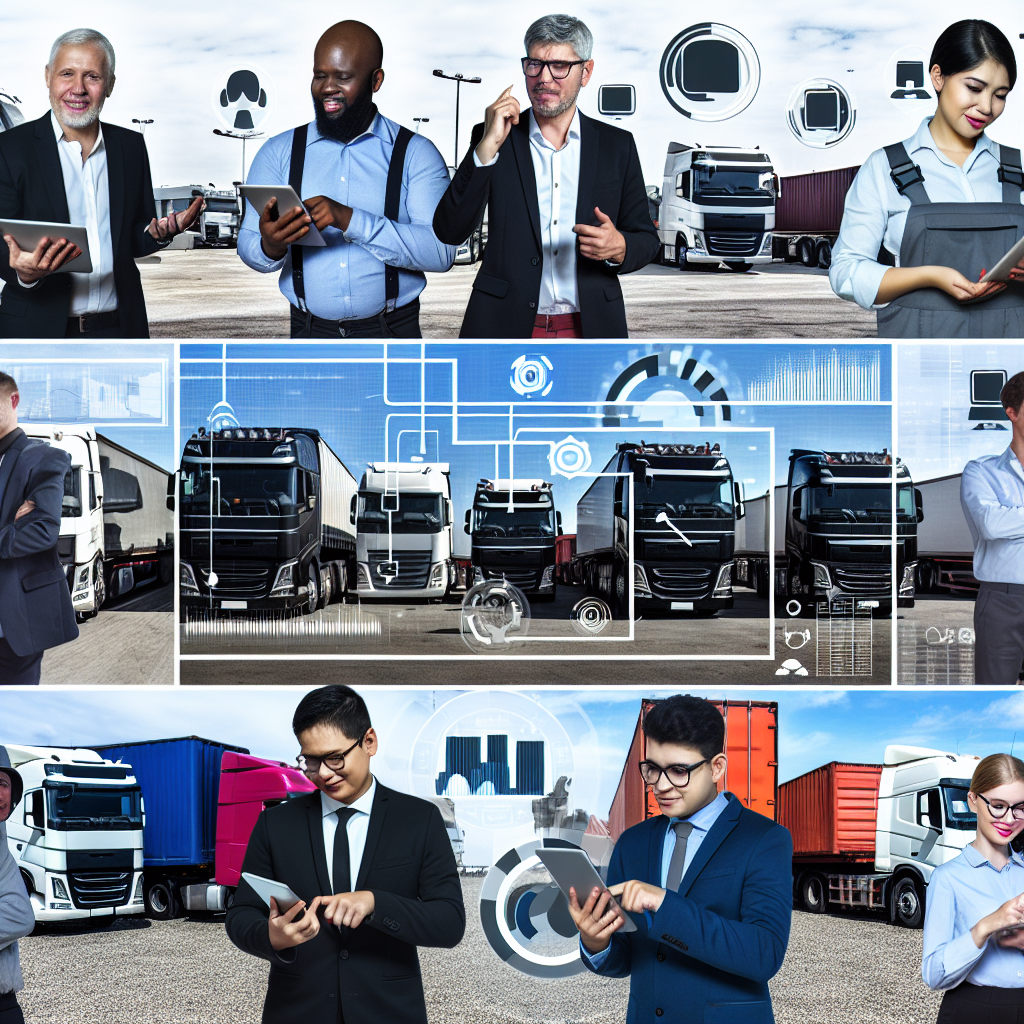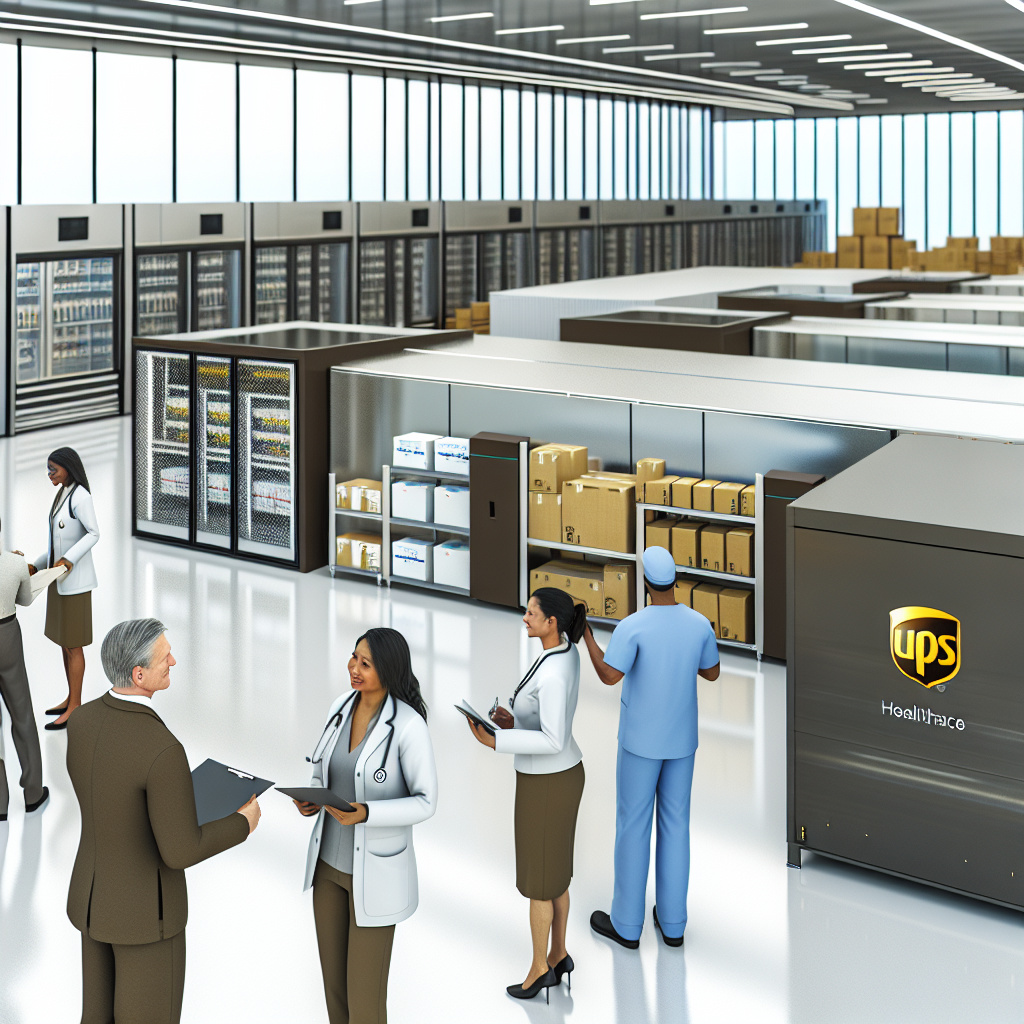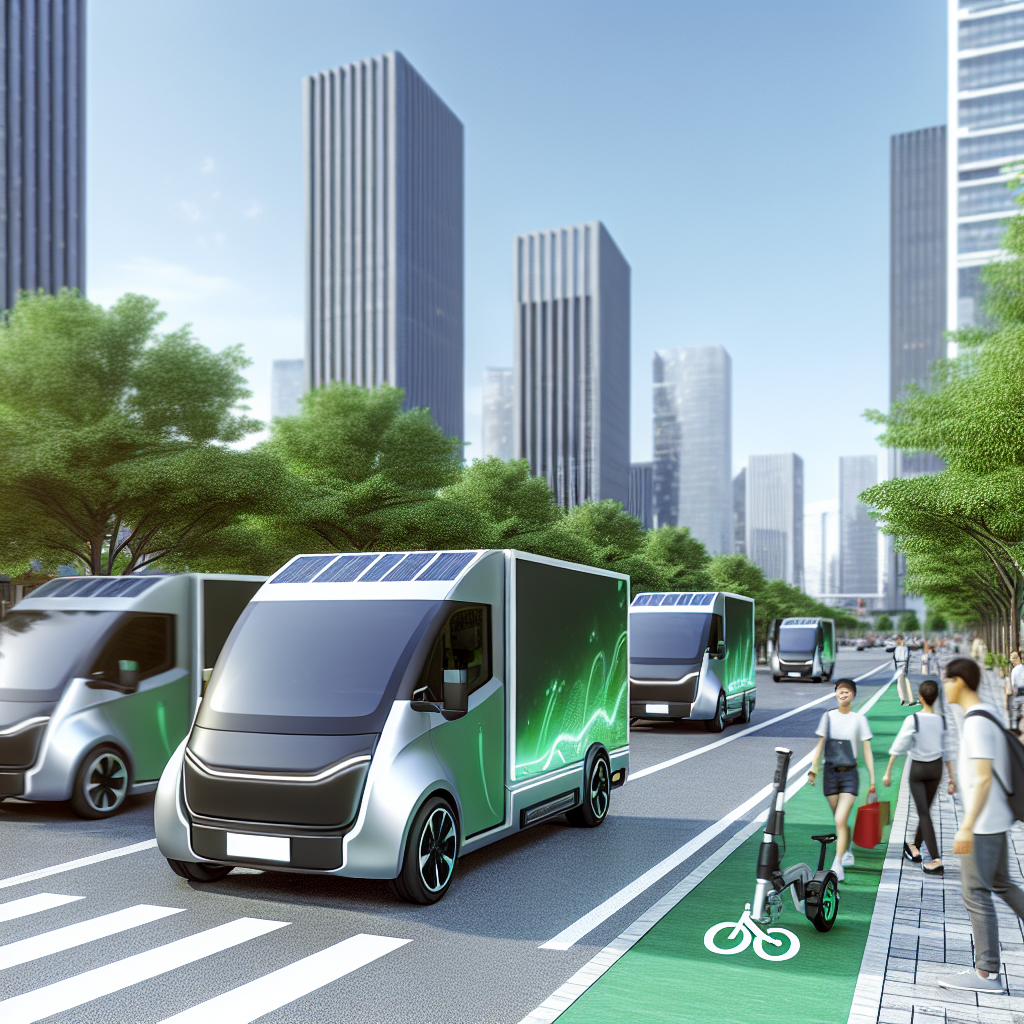In an era defined by rapid technological evolution, the trucking industry stands at a crossroads where digital innovation meets the irreplaceable value of human talent. As artificial intelligence, automation, and sophisticated communication tools transform operations and supply chains, it becomes increasingly vital for companies to adopt a balanced approach that prioritizes people-first strategies alongside these advancements.
This balance is not merely a trend but a necessity; research shows that investing in culture and human engagement fosters loyalty and productivity, ultimately propelling businesses forward. The voices of industry leaders echo this sentiment, urging fleets to remember that technology should enhance, not replace, the human element that is so critical to success.
As we dive deeper into this discussion, we will explore how forward-thinking organizations can harmoniously integrate cutting-edge technology with a commitment to their workforce, ensuring a sustainable and thriving future for all stakeholders in the trucking landscape.
The Importance of People-First Strategies in Trucking
Implementing people-first strategies in the trucking industry is crucial for enhancing employee engagement and retention, especially amid technological advancements. By prioritizing the well-being and development of drivers, companies can foster a more committed and satisfied workforce.
Embracing Technology to Support Drivers
Leveraging technology plays a significant role in retaining a remote workforce. Platforms that entertain, educate, and engage bring comfort and make remote workers feel valued and important. Companies that integrate such advanced tools are likely to see better retention rates as drivers feel supported rather than isolated.
Personalized Communication and Engagement
Providing a personalized employee experience is a game changer when trying to elevate the quality and regularity of engagement. Understanding how your team prefers receiving information and structuring learning opportunities that accommodate flexible schedules is essential. Tailoring the driver experience to cater to the individual preferences of your team can lead to higher satisfaction and commitment.
Recognition and Incentives
Recognition for performance, sharing fleet news, and fostering community contribute to improved employee retention and recruitment. Celebrating achievements and building a sense of community among team members can significantly impact an employee’s decision to stay with a company.
Leadership and Mentorship
Strong leadership and mentorship are also vital in developing future leaders in the industry. “I have benefited from the support and mentorship of many people throughout my career,” said an industry executive. Having mentors who advocate for an employee’s advancement can lead to greater employee satisfaction and loyalty.
Open Communication Channels
Maintaining open communication channels is fundamental for employee retention as it helps employees feel heard, valued, and engaged. Providing avenues for employees to access information and communicate with leadership fosters a sense of belonging and loyalty.
By integrating these people-first strategies, trucking companies can create a supportive environment that not only attracts but also retains quality drivers, ensuring long-term success in the industry.
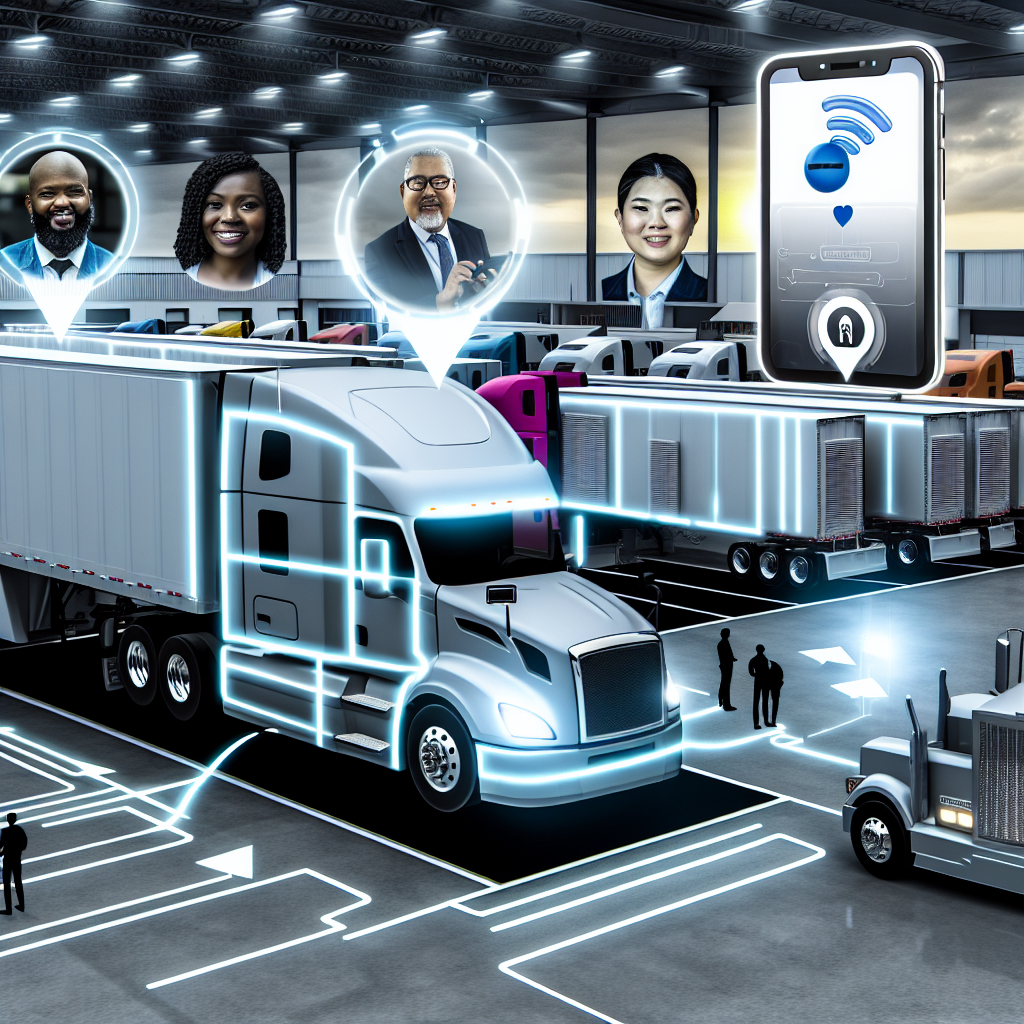
This image depicts the synergy between trucks and technology tools in the trucking industry, showcasing how modern innovations support human operators in their tasks.

This image depicts a diverse group of fleet members actively engaged in a training session, showcasing the importance of human interaction and collaboration in the trucking industry.
The Role of Training and Culture
In the trucking industry, effective training can greatly improve workforce efficiency and engagement. Recent advancements in automation have significantly shortened training times, reducing them from weeks to just hours. This change helps companies onboard drivers and support staff quickly and effectively, ensuring they gain the necessary skills as fast as possible.
Innovative training technologies, including virtual reality (VR) and interactive modules, enhance the learning experience. These tools provide realistic scenarios and hands-on practice that can be tailored to individual learning speeds. This approach acknowledges that employees learn in different ways, making it easier to develop skills across diverse teams.
Companies are also focusing on cross-training their employees to build versatile skill sets. Cross-training encourages a cooperative workplace culture and enhances operational flexibility. For example, rotating employees through different roles every three months helps develop a workforce capable of addressing various challenges. This not only reduces potential staffing shortages but also enriches employee experiences, keeping them engaged and satisfied in their roles.
In addition, creating a company culture that values continuous learning is essential. When companies encourage education and personal development, employees feel motivated to acquire new skills and take on new responsibilities. This proactive mindset nurtures a culture of growth and adaptability, allowing the organization to flourish amid digital changes.
In summary, using automated training methods alongside a focus on cross-training and supportive culture can substantially enhance workforce efficiency. By welcoming these improvements, trucking companies can meet the demands of a changing industry while also investing in their most vital asset: their people.
Trends in User Adoption of Digital Tools in Trucking
Recent research reveals significant trends regarding the adoption of digital tools within the trucking industry. Approximately 73% of trucking companies are integrating digital technologies to enhance their fleet management, resulting in a remarkable 65% increase in operational efficiency. This shift is indicative of the broader embrace of digitalization aimed at improving logistics and overall performance in a highly competitive market.
Among truck drivers, 55% express a preference for digital platforms to assist with route navigation, while 52% make use of mobile applications for compliance and reporting tasks. These statistics illustrate a growing reliance on technology among personnel in the field, providing evidence that digital tools are becoming essential components of daily operations.
Investment trends further affirm this move towards technology, as 62% of trucking companies are planning to invest more than $1 million in digital technologies over the next two years. This fiscal commitment signifies a robust enthusiasm for embracing innovations that streamline processes and enhance service delivery.
Moreover, the integration of artificial intelligence is on the rise, with 67% of companies utilizing AI to optimize logistics, leading to an average 15% reduction in delivery times through advanced route optimization tools.
However, the journey towards full digital adoption is not without its hurdles. Despite the advancements, 16% of companies continue to depend on basic tools like spreadsheets and manual phone calls, indicating resistance to transitioning fully into a digital framework. Additionally, 61% operate with only partially automated systems, which can hinder efficiency and create operational silos.
The need for workforce adaptation is also apparent, as 45% of workers in the trucking industry lack adequate digital skills necessary for utilizing new technologies. This skills gap poses challenges for the industry, as it necessitates significant upskilling and reskilling to ensure that employees can effectively interact with advanced tools.
In conclusion, while the trucking industry is clearly advancing towards digital tool adoption at a rapid pace, overcoming resistance to change and addressing the skills gap within the workforce remain essential for maximizing the benefits of these technologies. This emphasis on development and adaptability will be critical for organizations striving to thrive in an evolving digital landscape.
| Training Method | Time Investment | Effectiveness | Employee Satisfaction |
|---|---|---|---|
| Traditional Methods | Weeks to train | Moderate effectiveness | Varied and often lower |
| Automated Methods | Hours to train | High effectiveness | Generally higher |
Case Study: Netflix – Freedom and Responsibility Model
Company Overview
Netflix is a leading internet entertainment service known for its disruptive business model in the film and television industry. The company’s culture emphasizes autonomy and trust, encapsulated in its “Freedom and Responsibility” philosophy.
Approach
Netflix allows employees significant freedom in decision-making. This autonomy is complemented by a high standard of accountability, where individuals are expected to take ownership of their work. The culture encourages employees to share ideas and innovate, fostering an environment where creativity can flourish.
Challenges Faced
As Netflix expanded, maintaining a shared understanding of its core values among a growing workforce posed challenges. The company had to ensure that its culture of freedom did not lead to chaos, striking a balance between independence and alignment with company goals. Continuous communication and reinforcement of the company’s values played a crucial role in overcoming this challenge.
Measurable Outcomes
Netflix’s people-centric approach has led to significant improvements in employee satisfaction and retention. With lower turnover rates and high levels of engagement, the company consistently ranks among the top employers in the tech industry. Employees report greater job satisfaction, aligning with Netflix’s goal of maintaining a creative and motivated workforce.
Case Study: Zappos – Holacracy Model
Company Overview
Zappos, an online shoe and clothing retailer, is known for its distinctive company culture characterized by customer service excellence and employee empowerment.
Approach
Zappos adopted the “Holacracy” model to eliminate traditional management hierarchies. This shift allows for self-organizing teams where decision-making is distributed, enabling employees to take ownership of their roles and responsibilities. The goal is to enhance agility and responsiveness to market changes.
Challenges Faced
Transitioning to Holacracy required extensive training and a cultural adjustment for employees accustomed to traditional management. Significant effort was made to educate staff on their new roles within the self-organizing framework, ensuring everyone understood and embraced the change.
Measurable Outcomes
This model has led to improved creativity and collaboration among employees, positioning Zappos as a flexible organization capable of adapting to customer needs quickly. Employee engagement levels remain high, contributing to Zappos’ success as a customer-centric brand.
Conclusion
These case studies, along with those of companies like Adobe and IBM, demonstrate that implementing people-first strategies can overcome traditional challenges within organizations. They yield measurable benefits such as reduced turnover, increased engagement, and improved overall performance—key factors for sustained success in the competitive digital landscape. By prioritizing employee well-being, organizations can achieve their goals while fostering a motivated and dedicated workforce.
Conclusion
In conclusion, the trucking industry is at a pivotal moment where the integration of advanced technology and people-first strategies is not just beneficial but essential for future success. Companies that effectively balance their investments in cutting-edge digital tools with a commitment to enhancing the human aspect of their workforce are likely to thrive in an increasingly competitive environment. The case studies of leading organizations demonstrate that prioritizing human talent can yield substantial improvements in employee satisfaction, retention, and overall performance.
As we navigate the complexities of digital transformation, it is crucial to reflect on our own practices. Are we investing sufficiently in developing our teams alongside our technological capabilities? How can we create a workplace culture that values both innovation and human connection? By continuously asking these questions, we ensure that we remain adaptable and responsive to the evolving needs of our industry. The path forward lies in recognizing that technology should serve humanity, enhancing both operational efficiency and employee engagement, ultimately driving sustained success for all stakeholders involved.
Call to Action for Industry Leaders
As leaders in the trucking industry, now is the time to prioritize the human element in your technological investments. Embracing a people-centric approach will not only enhance employee engagement but also drive long-term success for your organization. Companies that fuse advanced technology with a genuine commitment to their workforce are better positioned to navigate future challenges and seize new opportunities.
Investing in your people means fostering a culture of continuous learning, recognizing individual contributions, and enhancing communication. When you place your employees at the heart of your strategies, you will see improved retention, morale, and productivity. Ultimately, this holistic approach will empower your organization to adapt to changes while remaining agile and competitive in the marketplace.
We encourage you to share your insights and strategies for implementing people-first practices in your companies. Let’s initiate a dialogue about how we can collectively champion this cause and inspire others in the industry to follow suit. Your feedback and experiences are invaluable in shaping a brighter, more inclusive future for the trucking industry.
Additional Resources
Here are some authoritative sources and articles that discuss the importance of people-first strategies and human-centric approaches in the trucking industry:
-
How Putting People First Drives Retention (HR Daily Advisor) –
Read More -
Shared Hardships Strengthen Bonds: Negative Shocks, Embeddedness and Employee Retention (arXiv) –
Read More -
Combining Human Expertise with State-of-the-Art Logistics Technology (McKinsey & Company) –
Read More -
A Hybrid Approach: Merging Human Intuition with AI Efficiency in Last-Mile Delivery (Forbes) –
Read More
Join us in making a commitment to a people-first ethos and investing in the heart of your organization—your people. Together, we can forge a resilient and thriving industry that values both technological advancement and the individuals who drive it.
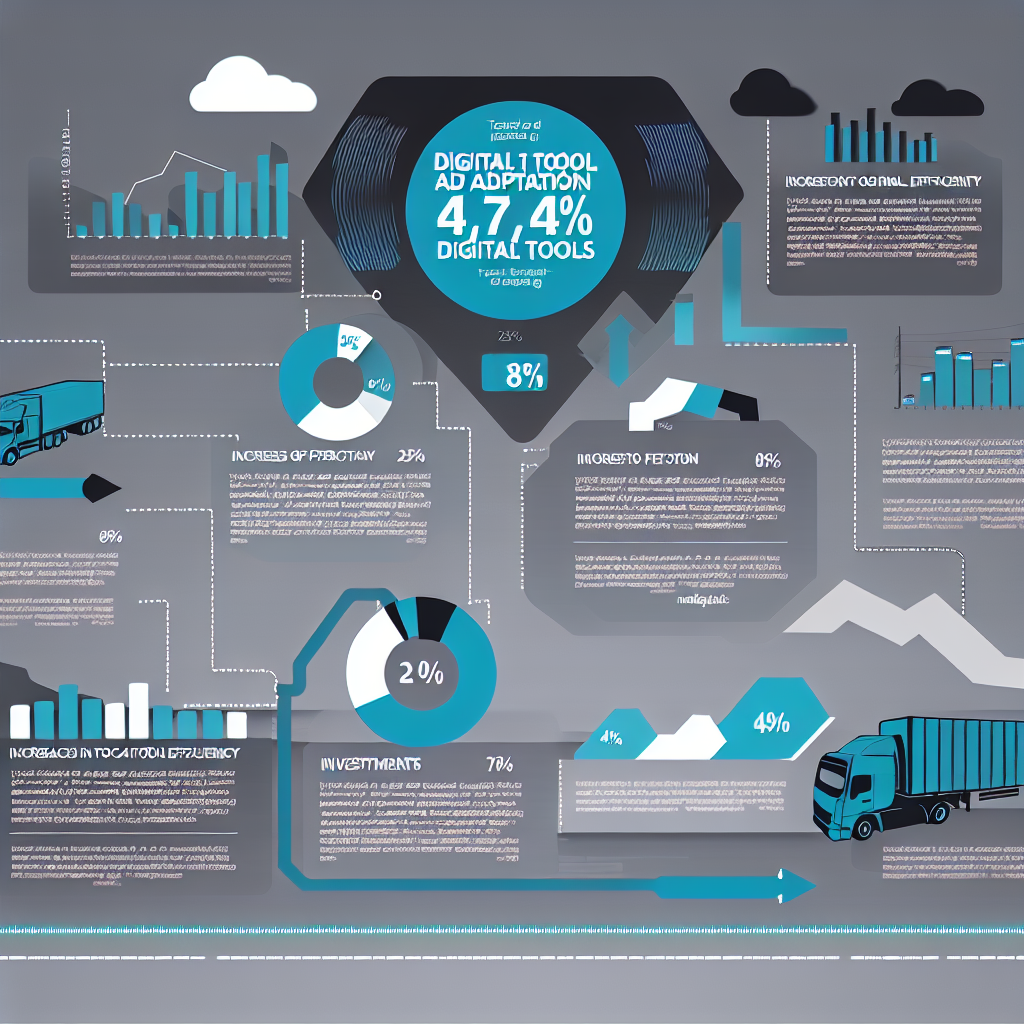
This image presents statistics related to digital tool adoption in the trucking industry, highlighting key trends such as the percentage of companies adopting digital tools, improvements in operational efficiency, and future investment trends in technology.
In an era defined by rapid technological evolution, the trucking industry stands at a crossroads where digital innovation meets the irreplaceable value of human talent. As artificial intelligence, automation, and sophisticated communication tools transform operations and supply chains, it becomes increasingly vital for companies to adopt a balanced approach that prioritizes people-first strategies in trucking alongside these advancements. This balance is not merely a trend but a necessity; research shows that investing in culture and human engagement fosters loyalty and productivity, ultimately propelling businesses forward. The voices of industry leaders echo this sentiment, urging fleets to remember that technology should enhance, not replace, the human element that is so critical to success. As we dive deeper into this discussion, we will explore how forward-thinking organizations can harmoniously integrate cutting-edge technology with a commitment to their workforce, ensuring a sustainable and thriving future for all stakeholders in the trucking landscape, especially in light of digital transformation in trucking.
The Importance of Employee Engagement Strategies in Trucking
Implementing employee engagement strategies in the trucking industry is crucial for enhancing employee engagement and retention, especially amid technological advancements related to trucking technology adoption. By prioritizing the well-being and development of drivers, companies can foster a more committed and satisfied workforce.
Embracing Technology to Support Drivers
Leveraging technology plays a significant role in retaining a remote workforce. Platforms that entertain, educate, and engage bring comfort and make remote workers feel valued and important. Companies that integrate such advanced tools are likely to see better retention rates as drivers feel supported rather than isolated.
Personalized Communication and Engagement
Providing a personalized employee experience is a game changer when trying to elevate the quality and regularity of engagement. Understanding how your team prefers receiving information and structuring learning opportunities that accommodate flexible schedules is essential. Tailoring the driver experience to cater to the individual preferences of your team can lead to higher satisfaction and commitment.
Recognition and Incentives
Recognition for performance, sharing fleet news, and fostering community contribute to improved employee retention and recruitment. Celebrating achievements and building a sense of community among team members can significantly impact an employee’s decision to stay with a company.
Leadership and Mentorship
Strong leadership and mentorship are also vital in developing future leaders in the industry. “I have benefited from the support and mentorship of many people throughout my career,” said an industry executive. Having mentors who advocate for an employee’s advancement can lead to greater employee satisfaction and loyalty.
Open Communication Channels
Maintaining open communication channels is fundamental for employee retention as it helps employees feel heard, valued, and engaged. Providing avenues for employees to access information and communicate with leadership fosters a sense of belonging and loyalty.
By integrating these employee engagement strategies, trucking companies can create a supportive environment that not only attracts but also retains quality drivers, ensuring long-term success in the industry of digital transformation in trucking.
